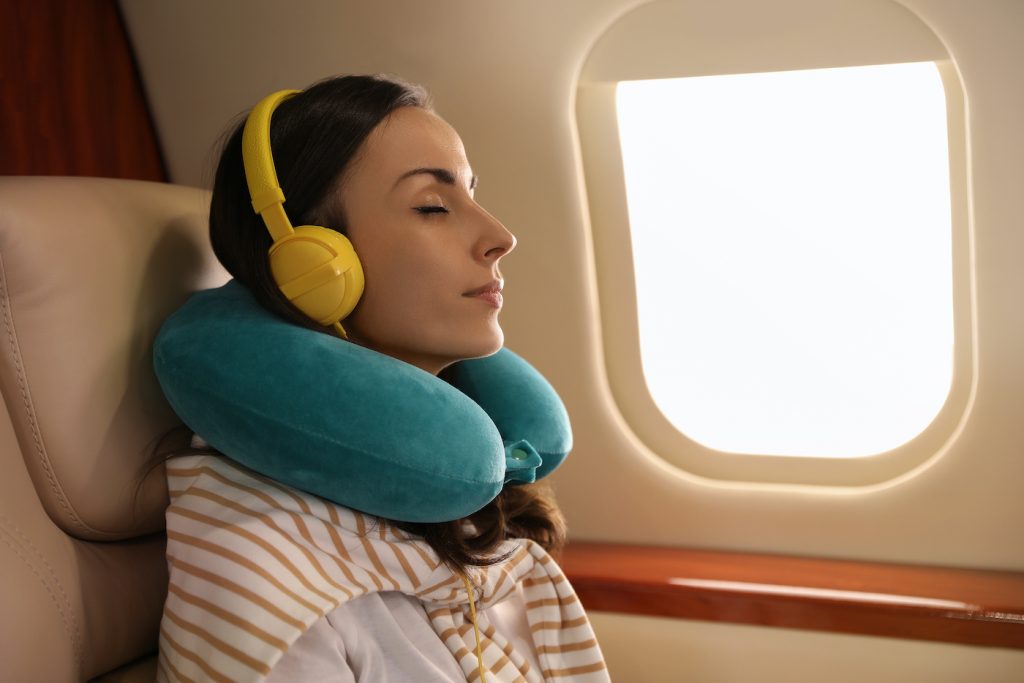
If the thought of grabbing that short (or long) flight makes your palms clammy and your heart starts racing as your hands prepare for the grip of death on the armrests, then you might be an anxious flyer (just kidding: you are!)
Though statistics show commercial air travel is regarded as one of the safest forms of transport in the world, with millions of people flying around the world each day arriving safely at their destinations, this bit of information might still not quite compute when you’re ready to board. If your love of traveling or a demanding job keeps you flying the friendly skies, here are a few tips for nervous flyers that might help put your mind at ease.
Know that planes are built to extremely high standards. They are tested and re-tested, they have an incredible number of safety features built-in and, believe it or not, they are built to fly without engines. Thanks to aerodynamics, they can simply glide through the air as the highly trained pilot lands safely. This is an extremely rare occurrence, rest assured, and planes do have more than one engine. Just wanted to let you know your plane would never just fall out of the sky.
Plan to distract yourself. Noise-canceling headphones or earbuds, a tablet loaded with books, movies (think upbeat for “happy thoughts”) and music, puzzle books, glossy gossip or fashion magazines, quantum physics books… whatever keeps your mind off of where you are. Make sure you have plenty of stuff other than just your electronics in case there is nowhere to charge and you run out of juice en route.
Know what to expect. There’s actually a great book out called The Nervous Flyer’s Handbook: Your Portable Flight Coach by former anxious flyer Kate L. Fellows, who will give you honest, time-tested ways to manage your flight experience. Who knows, you might even get to like it!
Get a jump on turbulence. Traveling by larger aircraft can help with turbulence—they usually fly at higher altitudes where there are fewer chances of a bumpy ride. Choosing the right time for your flight also helps: early morning or late night flights are generally smoother. You might also consider ensuring you book a seat towards the front of the plane; they’re more stable and definitely less noisy than those at the back of the plane.
Know this, too, shall pass. Take a deep breath—or three or four—and let it out in a slow, controlled manner. Think to yourself the ride isn’t going to last forever and it, too, shall pass.
Let go of the armrest—just for a little while. Staying completely tensed up and white-knuckling the armrests can be exhausting, to say the least! Do your breathing exercises and as soon as the place is riding smoothly and the captain turns off the seatbelt sign consider walking down the aisle to the bathroom, even if it’s just to mop your face, look yourself in the eyes and tell yourself everything is going to be OK. Moving around for a few minutes every hour of your flight will do wonders to keep your feet and ankles from swelling, it will give you something to do and help wean you away from the indented armrests.
There’s an app for that. Did you know your smartphone is smart enough to help you through your flight fears? Not only are they distracting, but there are also apps that can help you with breathing to loosen you up. Check out these breathwork apps—consider them your pocket stress management tools.
Travel prepared. The last thing on many travelers’ minds is travel health insurance or an emergency medical evacuation membership, but in our experience (and we’ve been doing this for 25 years), our members breathe easier when they know they’re covered in the event of a critical injury or illness during their vacation or work trip. It’s one less thing you have to worry about and it doesn’t even take up any space in your carry-on! Think about taking along a SkyMed membership in addition to any travel or travel health insurance you may have already taken out: there’s a reason it’s been called “portable peace of mind.”







